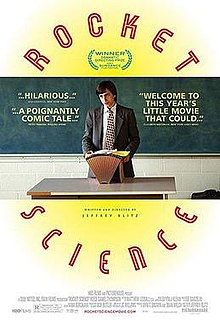Prelim Task: To create a continuity sequence involving filming and editing a character opening a door, crossing a room and sitting down in a chair opposite another character, with whom he/she exchanges a couple of lines of dialogue. This task should demonstrate match on action, shot/reverse shot and the 180 degree rule.
1. Who did you work with and how did you manage the task between you?
I was in a group with Lewi, Megan and James. Initially as a whole group we sat down and wrote the script and storyboard together so we all agreed on it. As Lewi is studying drama, he was more than happy to act in our sequence and James was perfect for our reserved awkward detainee. Megan and I took turns filming and monitoring sound equally, compensating each other if we found a particular shot challenging. For example, Megan was a lot smoother at panning so she filmed the establishing shot. We agreed on shot framing together and sometimes we would flip the camera screen over so the actors could see what we were seeing so we were all on the same wavelength. We all took turns at editing in postproduction and all collectively agreed on the shots that we would use in the final sequence.Lewi, Me, Megan and James!
2. How did you plan your sequence? What processes did you use? What theories did you try and take into account?
SCRIPT
INITIAL:
Group 3C Prelim Script
MORE DETAILED:
Gone Fishin’
We wanted to make sure our sequence flowed continuously without disrupting the narrative so that the audience could immerse themselves in the story. Obviously we had a specification of essentials we had to include but it didn’t mean we couldn’t be creative and produce something funny and different. We harnessed Levi Strauss’ theory of binary opposites to have two characters with very different personalities: chatty and laidback versus quiet and standoffish. Together, we drew up a script and storyboard and in the initial planning lesson, filmed and marked the sequence through on Lewis iPod to make sure it was not too complicated and it worked well as a whole, checking for any harsh framing distance jumps and the like. We made sure we had ticked the boxes; including a MOA, S/RS and the 180 degree rule. We filmed the whole scene from various different angles and distances so we had variation and choices when we came to editing- some of which we didn’t even include. For example, we filmed the whole conversation OTS and with a POV close up- the latter we didn’t end up using at all!
I was also desperate to include an Edgar Wright-esque sharp whip pan (as seen in this clip from Spaced) so that when Lewi turns to look at the message on the board, it is from the point of view of him. However it didn’t look very effective so it did not make the final cut. Our storyboard was an excellent blue print to refer back to when filming to make sure we had included everything.
3. What technology did you use to complete the task and how did you use it?
4. What factors did you have to take into account when planning, shooting and editing?
One very important thing to think about during planning was our actors. We could only use people available in our group and so had to make sure we selected those with the most confidence, screen presence and appropriate for the desired role so the sequence looked convincing and realistic. Time was another big issue. 2 hours in total to shoot and edit meant that we had to be ruthless with what we included and tried not to over complicate the sequence, our ethos being better to do a simple thing well than a complicated thing badly. As our sequence was filmed during lesson time we had to structure our filming between bells and lesson changes, as this would only contribute unnecessary noise. Also, another group needed to use the hallway for filming as well, so we had to liaise with them to allocate filming slots so we all had sufficient time to get our shots in. Fortunately, students and staff in the media block were very cooperative and could see we were shooting so would stay out of the way until one of us shouted ‘cut’ meaning that there were not any interferences from people coming in and out. During editing, we did not want to make our sequence too long but deliberately left in extended, awkward pauses for effect.
5. How successful was your sequence? Please identify what went well, and with hindsight, what would you improve/do differently?
Overall I think our sequence was pretty successful. The shots flowed well and the feedback has been positive; many people found it humorous which was our intention because it means they paid attention to the story. The acting was convincing and people particularly like the falling detention sign. The sequence however, is by no means flawless. There is an obvious continuity error in which Lewi’s jumper is rolled up, then down, then up again which was completely overlooked until postproduction.
6. What have you learnt from completing this task? Looking ahead how will this learning be significant when completing the rest of your foundation coursework, do you think?












